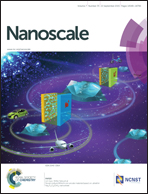Graphene-based hybrid films for plasmonic sensing
Abstract
Graphene, a one-atomic-layer-thick planar sheet of sp2-bonded carbon configured in a two-dimensional hexagonal lattice, has attracted considerable research interest with regard to sensing-related applications owing to its extraordinary electronic, optical, chemical, and mechanical properties. Graphene plasmonics may be excited in the mid-infrared-to-terahertz regions with high spatial confinement, low loss, and excellent tunability. Meanwhile, graphene can be utilized to tune the plasmonic properties of conventional metallic nanostructures in the visible and near-infrared regions, allowing it to act as a versatile component in various plasmonic applications. This article reviews the recent progress in graphene-based hybrid films used for plasmonic sensing and detection. We particularly emphasize on the unique roles and advantages of graphene in surface-enhanced Raman scattering (SERS) for bare graphene or graphene–metal hybrid films, and plasmonic refractive index (RI) sensing for graphene–metal or graphene–insulator hybrids, among other plasmonic sensing applications. The preparation of graphene-based hybrid films, their functionalization and signal detection techniques are also reviewed. Finally, the perspectives and current challenges in the use of graphene-based hybrid films for plasmonic sensing are outlined.


 Please wait while we load your content...
Please wait while we load your content...